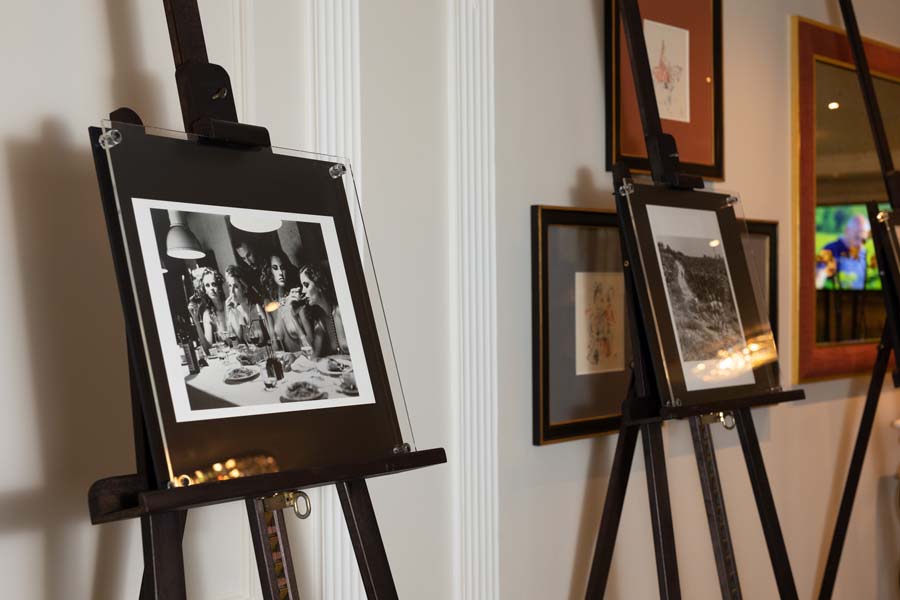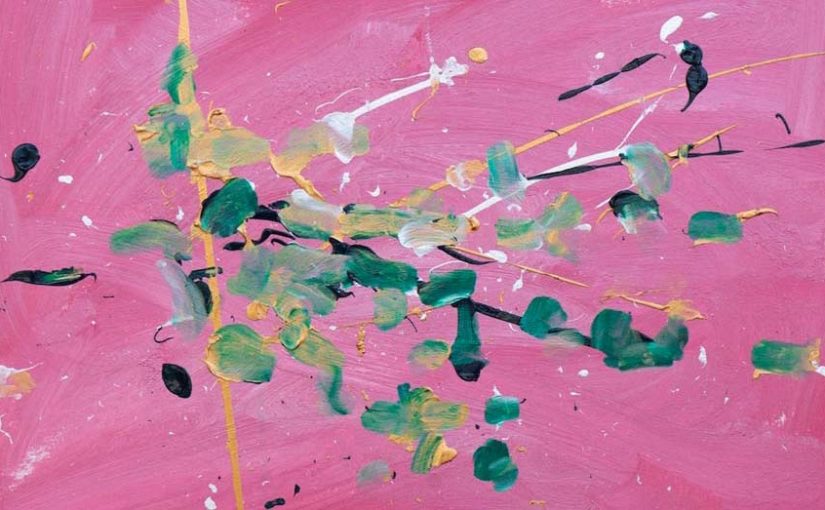Ca’ del Bosco has expanded into a new area of the winery to celebrate the iconic products by incorporating them into a series of evocative spaces, for an immersive experience. While sight is the most heightened sense of all, the guest’s senses are called upon to the most breath-taking stimuli through a number of artistic methods. The tour starts in the historical dome telling the inspirational story of all the activities carried out there, in a linear space varying in geometry, volume and perspective.
Spectators will be lead down the long vault where a dimensional passage between ancient and modern takes place, emphasised by lighting projecting the “starry sky” through the ceiling. In the style of Dante, the starry sky symbolises the change of what is to come in the new winery.
The materials, lighting and architectural proportions are different to the entire winery. Down the long tunnel there are endless perspectives where walls of Vintage Collection bottles are placed to mark out the route. Follow the dark floor lit up by spotlights on the left and right.
The ceiling is a sophisticated three-dimensional weave: a titanium-coloured stretched metal mesh that evokes the classic perlage of wine.
Down the corridor there is a video by Sicilian artist Giuseppe La Spada projecting his piece ‘Voluptas’. This piece shows a beautiful figure of a goddess from Latin mythology, the daughter of Cupid and Psyche, floating in a space where tradition, innovation, nature and art promise each other eternal love. Further down the winery, guests will be introduced to the Dome of the Senses, the company’s “true sancta sanctorum” is the circular space with pockets of immersive activities. In the middle of the room, find a lowered lenticular vault in which one must look down and endure a sensory overload. Around the room, there are four alcoves including four installations open to the visitor’s perception.
 In the centre of the room stands the work “Ludoscopio” by Paolo Scirpa, a master of immaterial art, a well of light reflected in an infinite background. Moving on to the most immersive creation of all, Roberto and Gabriele Falconi created an inverted cone covered entirely with 30,000 bottles of one of the winery’s most iconic products the Cuvée Prestige. Figuratively immersed in the refined liquid, the spectator descends in this lift to the lower floor through a high-tech mechanism composed of a telescopic walkway and panoramic lift, where guests can see the installation work on a grand scale all around them. Finally, another tunnel, this time inclined and still dedicated to the Cuvée Prestige. The escamotage is achieved through one of the most famous architectural expedients of the classical Italian tradition: the accelerated perspective. Guests can find this towards the exit. This is enhanced by a play of amber-coloured linear lights, a tribute to some masterpieces of contemporary art. This represents the conclusion of the tour and uses light, in a different form, to lead the guest “a riveder le stelle” (to see the stars again, Dante Alighieri).
In the centre of the room stands the work “Ludoscopio” by Paolo Scirpa, a master of immaterial art, a well of light reflected in an infinite background. Moving on to the most immersive creation of all, Roberto and Gabriele Falconi created an inverted cone covered entirely with 30,000 bottles of one of the winery’s most iconic products the Cuvée Prestige. Figuratively immersed in the refined liquid, the spectator descends in this lift to the lower floor through a high-tech mechanism composed of a telescopic walkway and panoramic lift, where guests can see the installation work on a grand scale all around them. Finally, another tunnel, this time inclined and still dedicated to the Cuvée Prestige. The escamotage is achieved through one of the most famous architectural expedients of the classical Italian tradition: the accelerated perspective. Guests can find this towards the exit. This is enhanced by a play of amber-coloured linear lights, a tribute to some masterpieces of contemporary art. This represents the conclusion of the tour and uses light, in a different form, to lead the guest “a riveder le stelle” (to see the stars again, Dante Alighieri).
We like to think of it as the “Ca’ del Bosco Method”. It’s more than just an expression. It encapsulates our interpre-tation of the Franciacorta Method. It’s a personal thing, an idea of perfection: perhaps a little over the top, but like no other. Ca’ del Bosco is an iconic Franciacorta winery. The dreamchild, headstrong and often contrarian, of Maurizio Zanella, its founder, whose rebellious spirit led him– over fortyfive years ago – to undertake a journey into the unknown. In a pristine land, whose winemakig potential was still unproven. Our first vintage dates back to 1972. The Ca’ del Bosco Method means setting your own course. Always. Whatever the cost, and often it has been high. It means ca-ring about the quality of your wine. And the health of the land. And respecting tradition. A “tradition” that, to us, means paying tribute to the past and to those who came before us, as shown by the Cuvée Annamaria Clementi, dedicated to Maurizio’s mother. A tradition that is not static, but keeps moving forward. “Tradition”, to us, doesn’t mean foregoing continuing improvement, or resting one one’s slightly dusty laurels in self-celebration. On the contrary, Ca’ del Bosco presumes and aspires to conjugate the past with the present. We think it can be done. At the risk of sounding smug, we are the living proof. Or at least, we try to be.
 Superior wines, natural wines
Superior wines, natural wines
We are profoundly interested in the debate – the dedication, the ferment – that swirls around so-called “natural wines”. Ca’ del Bosco cares deeply about preserving the production potential of its land, the sustainability of its terroir. Today, all 247,77 hectares are cultivated according to certified organic viticulture methods. The relationship between tradition and innovation is hotly debated. Sometimes it’s stimulating, but more often it is debased by rigid dualisms. Until a few years ago, there was a dangerous tendency to standardize tastes. Some vintners, going against the mainstream trend, were able to focus attention back on key concepts: loyalty to the terroir; avoidance of chemicals in the vineyard; the proportion of wine aged in oak; the extent of their reliance on sulfur dioxide. And much more besides. But to make wine – good wine – principles aren’t enough. Today we risk a needless contrast between “modernists” and “traditionalists”; an ideological dispute that ends up justifying, perhaps in the name of naturalness, wines with shortcomings, or in any case disappointing. There are no shortcuts in the world of wine. The naturalness of a product is no excuse for eliminating clarifications or extolling the supposed virtues of local yeasts. Every year, our winery experiments with solutions designed to further improve the final product.
This research has led us to discard some preconceptions. For the example, the above-cited enthusiasm for local yeasts: it’s just not true that they exalt the terroir. Instead, they can dominate, and in a disorderly manner, the initial stage of the fermentation process. With the effect of covering the distinctive characteristics of the grapes and the terroir: the exact opposite of the much-ballyhooed intended outcome. Ca’ del Bosco has instead decided to use selected yeasts that guarantee a rapid start to fermentation, which also allows us to limit the use of sulfites. We abstain from using generic yeasts, or yeasts that leave a characteristic imprint, choosing neutral ones instead. Exactly because they do not alter the specific properties of the grapes. And the personality of each vineyard. Finally, Ca’ del Bosco has learned, over the decades, how to use wood, letting it impart only the necessary qualities. Without ever becoming the dominant component.
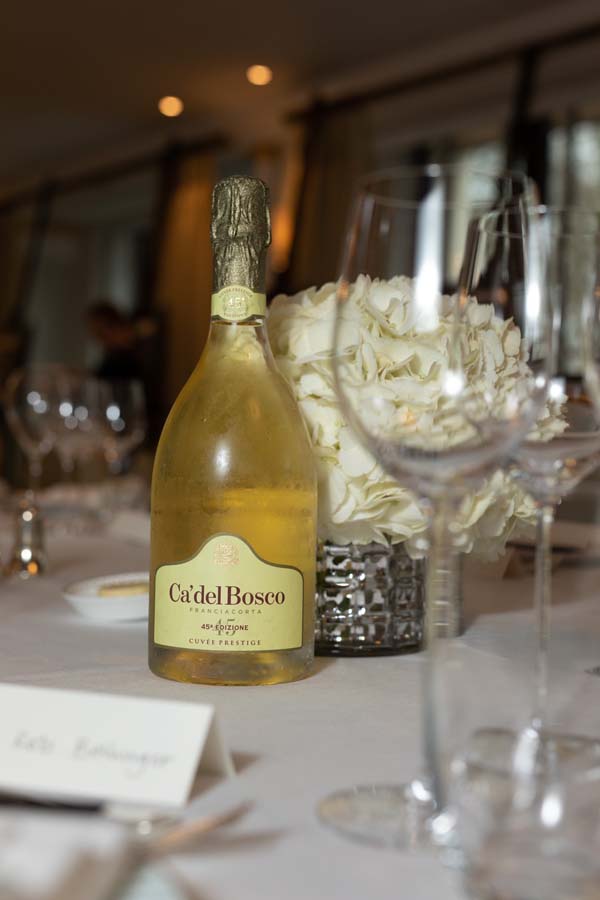 Pioneers
Pioneers
Franciacorta has become a famous place, known worldwide, but its wine-making history is still relatively recent. It is building an important reputation, with both the public and the critics. But it cannot deviate from certain prerequisites. To make wines of indisputable quality, the vines must be at least 15 years old. The average age of our 247,77 hectares of vineyards is over 20 years old. Exposure is decisive. The fact of being pioneers in Franciacorta helped us, because we were able to plant our vineyards in the most favorable areas. Despite considerable expense, and always at the mercy of an unpredictable market, Ca’ del Bosco cultivates all of its vineyards. Directly. Personally. We follow maturation closely. Vineyard by vineyard. We taste the grapes and measure their ripeness by taking samples, several times a week. Thanks to our cutting-edge laboratories, we constantly monitor all the stages in the winemaking process. Finally, we label and cap each and every bottle. We do this to guarantee perfect traceability. And to emphasize that each one of our bottles goes through its own process. It has a name and a number. A story. A life all its own.
Grape growers. And proud of it.
We’ve always thought that wine could become art. Our work is infused with a strongly romantic component. There is the epic aspect of having to abide by decisions, those that come ‘from above’ and do not depend on us. It is Nature that sets the rules: all we can do is to interpret the signals. Wine is tradition. Dedication. Hard work. It is passion. Time. Terroir. Wine is a challenge. Research. A gamble. And wine is emotion. The emotions we get from the very best bottles. The emotions we would like to bring to our consumers, loyal or occasional though they may be. The same enthusiasm, the passion that, twenty-seven years ago, led us to invest in the highest vineyard in all of Franciacorta. 450 meters above sea level. It’s a pristine place, uncontaminated, and with a view of Lake Iseo. We like it. You’ll like it, too.
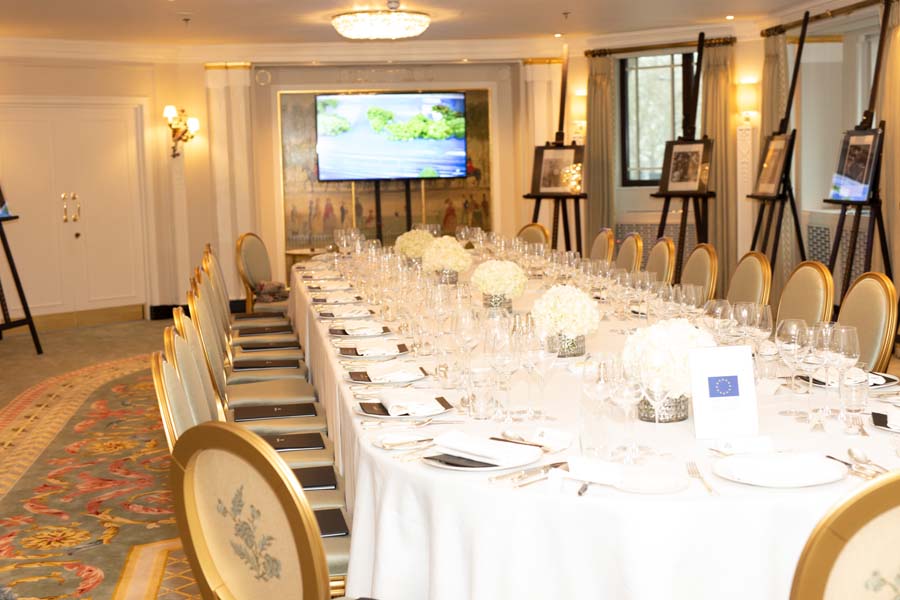 The importance of detail
The importance of detail
The Ca’ del Bosco Method means paying attention to every little detail. Often, what seems marginal is what makes the difference. What allows fast improvement, what guarantees excellence that doesn’t just taste good, but is good for you, too. During the wine harvest, every move is critical. The grapes are transported in small hampers, containing no more than 16 kg. That is a small enough quantity to eliminate any risk of squashing the grapes. Hygienic controls are extremely rigorous, with sanitization after every pressing cycle. After the grapes are harvested, strictly by hand, they are cold stored before cold pressing. This slows down oxida-tion and fermentation. All the bunches are carefully examined and selected by hand: a great wine must begin with healthy grapes. The intact bunches are pressed softly, after which the must is divided into three categories. The first, or free-run juice, will make up the most prestigious cuvées, the second will only be used in part. The third will not be granted the privilege of bearing the Ca’ del Bosco name. Vinification of the finest quality must is carried out for each single vineyard, so that its terroir can be expressed to the fullest. It is only after seven months of aging, during the phase of assembly that precedes bottling, that our 8 cuvées are blended. At Ca’ del Bosco, must and wine are never stirred with pumps. That would cause the texture of the wine to break up, compromising the integrity of their natural aroma.
We prefer to use a system of movement based on the principle of communicating vessels: simply put, using the force of gravity. Less invasive, more effective. All the Vintage Collection wines and the Annamaria Clementi are aged in barriques until they are assembled. Aging on the lees always takes a long time, for all of the Ca’ del Bosco Franciacortas. Finally, riddling is carried out by hand for the different formats of the classic 750 ml bottles. Every day. With the same movements, precise machines carefully shift the bottles and relieve men of the burden while guaranteeing the same limpidity. Wine retains its attractiveness if we keep in mind that winemaking is a marvelous example of artisanship. Even the closure makes a difference: strictly in top quality natural cork. During the corking of still wines, optical sensors measure the porosity of the two ends of the cork. The smoother end, which is less porous, is oriented towards the interior of the bottle, in direct contact with the wine.
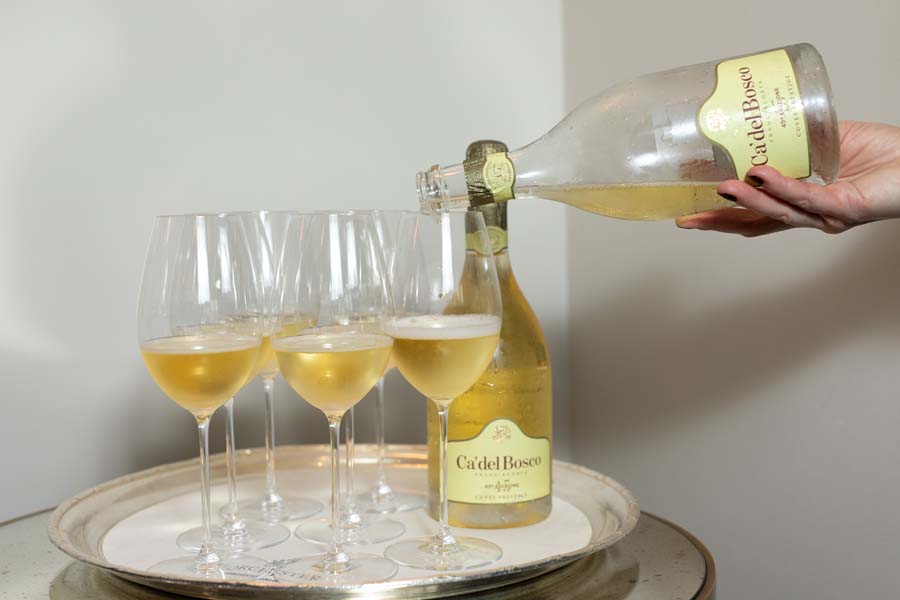 Disgorging and bottling
Disgorging and bottling
It often happens that wines produced by natural, in-bottle fermentation have difficulty aging after being disgorged. A few months after they are disgorged and marketed, they lose their potential. This mostly depends on their contact with oxygen during vinification and aging, but above all at the moment of disgorging. This is when the wine is subjected to a brutal oxygen shock, as air enters into the neck of the bottle and stays there, even after it is corked. Because of this undesired oxygen, which interrupts years of calm resting on the spent yeasts, the wine suffers a strong stress. Which quickly sets off its decline. Making it deteriorate well before its time. In these cases, the most commonly employed solution is to add considerable doses of sulfur dioxide and antioxidants. But we have taken another route. We were the first in the world to use a special corking machine, specially designed by us. It was patented in November 2005, by Stefano Capelli, the Ca’ del Bosco oenologist, and by the draftsman Piero Bielli. The new technology eliminates the oxygen prior to corking. By carrying out disgorging in an oxygen-free environment, we can further reduce the presence of sulfites, one of the aspects we care most about. Our Franciacortas are healthier. More enjoyable. And long-lived, very long-lived. We also pay great attention to the bottling process, a step whose importance is unfortunately underestimated by many. The star here is the filling machine. It is at a lower level of the wine cellar than the containers holding the wine to be bottled. The wine reaches the bottling line naturally, moved by the force of gravity alone. It enters the bottle through a special nozzle, with a “long filling tube”, which fills the bottle from the bottom up, so that the wine does not flow over the sides of the bottle, once again minimizing the shock of contact with oxygen.
www.cadelbosco.com/en/
@cadelbosco_official
